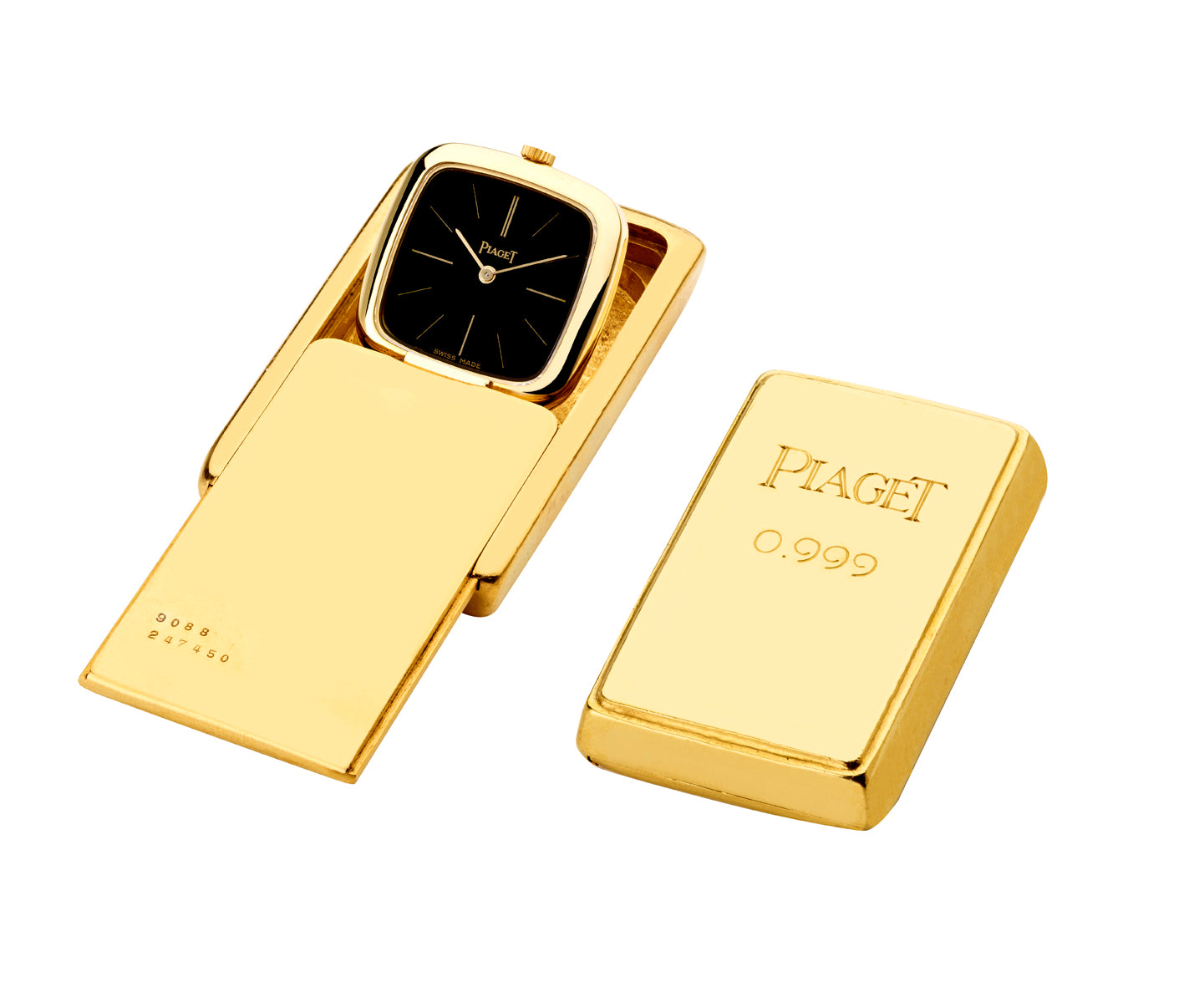Elena Camera, Brand Manager of Piaget Italy, Greece and Israel, recounts the milestones of an incredible journey started in 1874.
Piaget's fable: the origins
Once upon a time, in a quiet mountain village in the Swiss Jura, there lived a young farmer. During the long winter months, from November to April, while he waited for the snow at high altitude to melt and allow him to return to the mountain pastures, he retreated into solitude to dedicate himself to his greatest passion: the creation of watch components precision. In particular, his interest was focused on a tiny piece called the "anchor escapement", which became his obsession and his greatest "secret".
Piaget's story might actually start out as a real fairy tale! In 1874, at just 19 years old, Georges-Edouard Piaget founded the Maison in La Côte-aux-Fées which still bears his prestigious name today. When, in 1911, Timothée Piaget, one of the founder's fourteen children, took control of the company, the Piaget name was already recognized by the major watchmaking brands as synonymous with excellence.
Starting in the 1920s, Piaget became the supplier of prestigious watch brands such as Audemars Piguet, Rolex, Vacheron Constantin and Cartier. From a small movement manufacturer it became a well-known name that believed in its own savoir-faire, elevated it to a strong point and officially declared it in 1942 with its first slogan: "Luxury and Precision".
In 1943, the Piaget family makes a fundamental decision for the future of the company: it registers its trademark. From this moment on, Piaget transforms itself into a watch manufacturer , placing its name on each creation and introducing it to the market with pride.
The Piaget Manufacture beyond borders: technological innovations and international success
Gérald and Valentin Piaget, grandsons of the founder, introduce an innovative perspective and guide the Maison towards technical developments that will forever remain distinctive of the brand. The size of the movements of the time and their thickness represent a strong limit for creativity. Therefore, the two brothers work to reduce these constraints and give greater space and attention to the aesthetics of the watch, in order to allow new forms of expression of time. Thus, alongside the classic bracelet watches, the first ring watches and coin watches were born.
Guided by the spirit of their ancestor, whose motto was "always do more than necessary", the two brothers share great ambitions, both technically and commercially. The inauguration of the first Piaget Manufacture represents an epochal event for the inhabitants of the village of La Côte-aux-Fées, who deferentially call it "The Factory". Piaget becomes the region's largest employer and shares its growing success with the local community.
Subsequently, under the impetus of Gérald Piaget, the brand established itself beyond the borders of Switzerland, starting its international expansion , which attracted orders for watches and movements from every corner of the world.
However, the decisive turning point for the brand came in 1957, when the La Côte-aux-Fées Manufacture presented the famous extra-flat hand-wound caliber 9P , developed by Valentin Piaget. A year later, Valentin filed two patent applications for a new movement: at just 2.3 mm thick, the 12P earned Piaget entry into the Guinness Book of Records as the creator of the thinnest automatic movement in the world . An authentic watchmaking revolution, the extra-thin movement becomes the symbol of Piaget's pioneering spirit.
Piaget's evolution: from precious metals to fine jewellery
Always in search of perfection , Piaget makes an epochal decision oriented towards the exclusive production of watches made with precious metals . To take on such an audacious challenge requires an incredible mastery of gold and platinum working techniques, and Piaget not only excels in this area, but also stands out in the unique conception of its timepieces. The gold bracelets , characterized by unparalleled flexibility, elegantly adorn the wrist, harmoniously extending the line of the extra-flat cases. The watchmaker embellishes his creations with the insertion of diamonds, thus introducing the concept of the jewel watch , which seduces an international and high-level audience.
It was under the banner of «Piaget Watchmaker – Jeweller» that the brand opened its first boutique in 1959, in Geneva, at number 40 Rue du Rhône, inextricably combining the brand's watchmaking and jewelery skills. Piaget subsequently acquired numerous goldsmith's ateliers in the city and the business has since developed on two fronts: La Côte-aux-Fées and Geneva.
In 1964, Piaget surprised the world by creating watches with hard stone dials , such as lapis lazuli, onyx, tiger's eye, opal, jade, coral, malachite. A true explosion of colors made possible by the extra-flat movement . With audacity and mastery, Piaget blends style and technique, approaching the world of jewelery in a period in which each profession strenuously defends its own prerogatives. This unconventional decision elevates the watch from a simple timepiece to a dazzling ornament .
At the top of contemporary fashion and culture, Piaget's high jewelery creations become protagonists of the international scene, worn proudly by show business stars and famous people.
Today, the Piaget Manufacture, now a renowned Maison of High Jewellery , has the resources to create extravagant jewelery models, authentic works of extraordinary luxury. Thus, in Piaget's universe, between explosions of color, bold designs and modern creative masterpieces, the impossible is magically transformed into the possible.
The Piaget Society and its iconic collaborations
The Maison Piaget signs important collaborations, thanks to the creative flair of Monsieur Piaget which leads to the creation of the Piaget Society in the 1960s. This concept takes shape when Monsieur Yves Piaget brings together personalities from the world of culture and thought, in order to share the passion for beauty and art, giving life to a sort of community of artists and VIPs of the time. This community spontaneously becomes passionate about Piaget creations, recognizing in them a precious expression of their feelings.
In the 1960s, movie stars and prominent figures gathered in the most glamorous locations to celebrate life with style and a touch of hedonism. The memorable parties organized by Yves Piaget on the French Riviera are still legendary today, with illustrious participants such as Ursula Andress, Bjorn Borg, Arman and Miles Davis, who did not go on stage without his collection of wristwatches, many signed Piaget.
Fashion and style icons choose Piaget, praising its quality and cutting-edge design.
The taste of sweet life from Andy Warhol to Cary Grant
Over the years, Monsieur Piaget established sincere friendships with artists and entrepreneurs, who shared a taste for la dolce vita . His well-known friendship with Andy Warhol is particularly significant, starting in 1979 in New York and lasting many years. Warhol was a fan of timepieces, in particular he loved his two Piaget watches which we still find in the collection today and which have become true icons for those who love vintage-inspired watches with hard stone dials.
Among the numerous collaborations, the one with Salvador Dalì in 1967 stands out, when Piaget adopted an iconoclastic attitude, sharing the artist's passionate impulses. Thus was born the Dalì D'Or , a coin minted in his name that projects the brand into an era of limitless creativity. It is said that for the launch of the collection, during the photo shoot, the eccentric Dalì asked to be seated on a sort of transparent throne so that the public around could contemplate him in all his dazzling majesty. The imperturbable Yves Piaget showed up the next morning with a transparent inflatable chair and Dalì agreed to be photographed sitting with his cane and his jaguar cub on a leash.

Piaget embodies a unique charm and an ever-evolving style, distinctive for its unconventional chic. Even prominent personalities such as Jackie Kennedy loved to wear Piaget watches. Cary Grant , who embodies elegance with his unmistakable gait, his slender figure and his imposing and gentle presence, was enchanted by an ultra-thin Piaget watch . It is said that during a gala dinner organized by
Princess Grace Foundation, Grant approached Yves Piaget and proudly showed him the Piaget on his wrist, teasing him with a challenge – “It's an extraordinary watch. Why don't you try to make one just like it?”.
Even today, the essence of the Piaget Society is preserved thanks to the devoted friends of the Maison who come together to honor the creative audacity and the joy of living. Furthermore, the Piaget watch collections, embodying the spirit of the founder on a daily basis, help keep this extraordinary legacy alive.
The bond with Pisa 1940 is special as well as long-lasting. More eloquent than many words is a photo from the Pisa archive, presumably dated to the mid-1960s: on the iconic facade of the Flagship Store building in Via Verri in Milan, a huge sign stands out, placed to attract customers most demanding in terms of Haute Horlogerie: Piaget .






